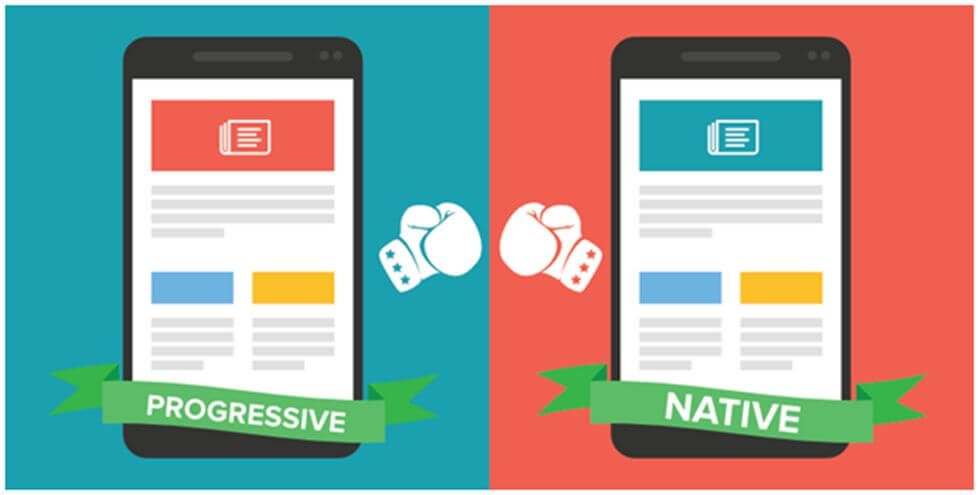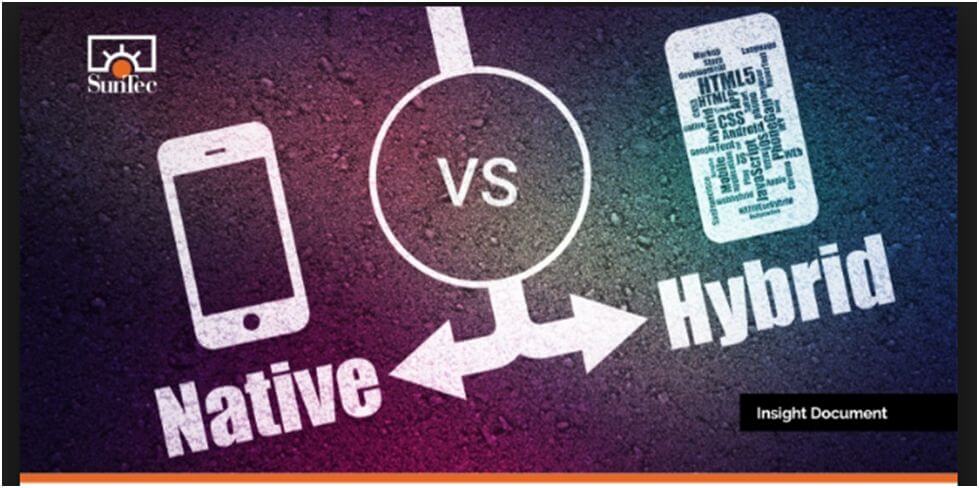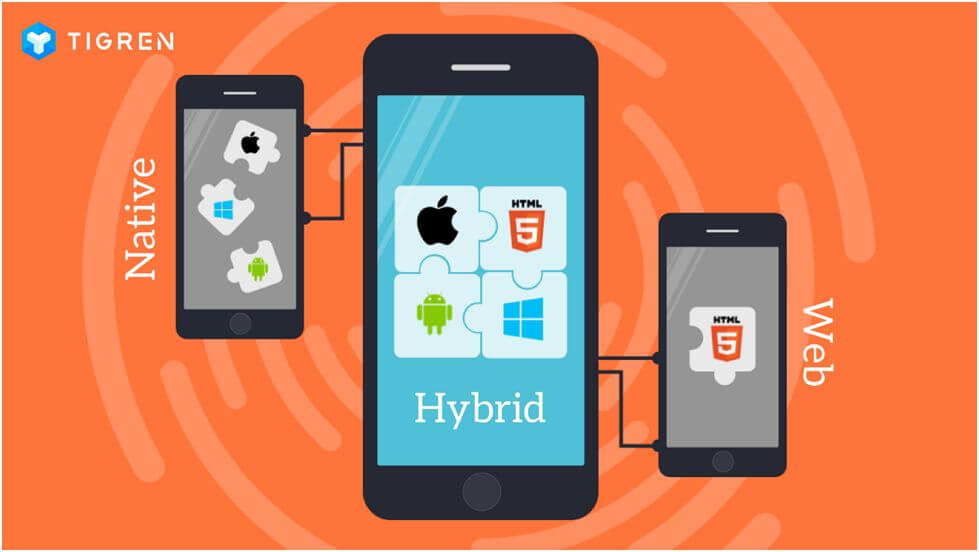
More than half of internet users depend on smart gadgets and smartphones for accessing the World Wide Web. Unlike other smart devices, one can easily find everything on a smartphone. The ever-growing importance of mobile phone is undeniable and probably unending.
The chief reason behind such extensive use and preference of smartphones over desktop and PC is the availability of information on fingertips — the transformation of mobile phone from an ordinary communication medium and tool to a device of colossal importance. The progress of mobile technology is attributed to high-speed internet, improved interfaces, innovative computing and most importantly mobile applications.
These mobile applications didn’t just changed the facades of mobile computing but revolutionized the whole mobile experience for the user as well. From logging in through computer to check on emails to only getting notified about new emails and messages, mobile applications humanized the computing experience. On the other hand, the rise in mobile addiction is accredited to these mobile applications. From providing you with the ease of functionality and use to making every option accessible and available, these mobile applications have increased human dependency on smart devices.
Where the advent of mobile applications resulted in ever-increasing and incurable addiction, it is also benefitting the industrial, technological and corporate sectors with personalized and accurate user experiences. The urge to be glued to the mobile’s screen is not because of the device itself but the experience which the user draws from it, and nothing could make an experience worthwhile than a well-designed and constructed application.

The three Ps of native apps:
Native applications provide you with higher performance, precision, and perfection. From zero worries about operating system incompatibilities to a guaranteed synchronization of applications with the host operating system, using native applications is not just relieving for the developer but also for the user as well.
For instance, consider this scenario, try uploading a photo on your Instagram from your phone camera without any delays, still processing it? Well, that’s because the platform application is not a native to your phone. Not only native applications are imperative for the proper functioning of the device, but they are also conducive in giving a personalized mobile computing experience.
The cross-over of multiple platforms:
Mostly built on HTML5 and JavaScript, hybrid the functionalities and operations of hybrid applications are quite similar to that of a native application. However, this resemblance is restricted to the basic controls and navigational and other core elements.
One of the biggest beneficiaries of the hybrid application is business organizations and enterprises. From a small-scale company and fresh startup to huge organizations and successful brands, hybrid apps are quite popular and highly-appreciated in the business world.
Hosted quickly and developed even more rapidly, hybrid apps provide the developers with the hassle-free development process. Because all you have to do is to download some plug-ins and libraries to ensure 100% compatibility of the application with the device’s operating system and the rest is just a piece of cake. The chief reason behind such widespread use and preference of hybrid apps is that you can have a single piece of code for multiple platforms.
The biggest relief? Easy programming language. Simply add a few more lines of code, and you are all set to host your hybrid app on every platform. The simplicity of the programming languages reduces the development time drastically. We live and breathe in the business world, where a startup is brought to life almost every day, and all of them are app-based.
Opting hybrid application over any other type of application is only sensical– lower development cost, lesser development time, shorter development process, concise development code. The popularity of these applications is skyrocketing and for all the valid reasons. Since these applications can be used on all types and categories of operating systems and platforms—so whether you want to reach out to your potential business prospects or your budget restricts you, a hybrid application will work smoothly and integrate seamlessly to assist you in accomplishing your objectives.
Where does the future of mobile computing stand?

To cut a long story short, if the smartphone is the cake than the mobile application is the decoration and cherry on the top. Almost every internet and mobile phone is well-aware of the fact that without mobile applications the mobile experience is nothing but staring at a black screen.
The case under study: native or hybrid?
First things first, let’s get down to what native and hybrid actually means?
“As the name suggests, hybrid applications are those applications which are formed and developed by collaborating native and web applications. These applications can easily be downloaded from app stores and are built to serve multiple operating systems. “
By eliminating the intricacies from the hybrid application, we get native mobile applications. These applications are developed for a particular type and category of the mobile operating system. Additionally, these applications are built, depending on the device’s OS while leveraging the UX principles and UI technicalities to improve user engagement.

The three Ps of native apps:
Native applications provide you with higher performance, precision, and perfection. From zero worries about operating system incompatibilities to a guaranteed synchronization of applications with the host operating system, using native applications is not just relieving for the developer but also for the user as well.
For instance, consider this scenario, try uploading a photo on your Instagram from your phone camera without any delays, still processing it? Well, that’s because the platform application is not a native to your phone. Not only native applications are imperative for the proper functioning of the device, but they are also conducive in giving a personalized mobile computing experience.
The cross-over of multiple platforms:
Mostly built on HTML5 and JavaScript, hybrid the functionalities and operations of hybrid applications are quite similar to that of a native application. However, this resemblance is restricted to the basic controls and navigational and other core elements.
One of the biggest beneficiaries of the hybrid application is business organizations and enterprises. From a small-scale company and fresh startup to huge organizations and successful brands, hybrid apps are quite popular and highly-appreciated in the business world.
Hosted quickly and developed even more rapidly, hybrid apps provide the developers with the hassle-free development process. Because all you have to do is to download some plug-ins and libraries to ensure 100% compatibility of the application with the device’s operating system and the rest is just a piece of cake. The chief reason behind such widespread use and preference of hybrid apps is that you can have a single piece of code for multiple platforms.
The biggest relief? Easy programming language. Simply add a few more lines of code, and you are all set to host your hybrid app on every platform. The simplicity of the programming languages reduces the development time drastically. We live and breathe in the business world, where a startup is brought to life almost every day, and all of them are app-based.
Opting hybrid application over any other type of application is only sensical– lower development cost, lesser development time, shorter development process, concise development code. The popularity of these applications is skyrocketing and for all the valid reasons. Since these applications can be used on all types and categories of operating systems and platforms—so whether you want to reach out to your potential business prospects or your budget restricts you, a hybrid application will work smoothly and integrate seamlessly to assist you in accomplishing your objectives.
Where does the future of mobile computing stand?

Choosing between hybrid and native application has always been a difficult task for many tech experts, professional developers, and enterprises. Ultimately it all comes down to the expectations, objectives, and requirements of the developed application.
However, the unacknowledged yet the most effective aspect which compels the user to install the application is the user interface of the app. The user has no concern about the technicalities such as the platforms and the programming language used, all that he wants is an easy-to-use and access application.
A general internet-user doesn’t download more than three to five application per month which usually includes some of the go-to applications. Tech experts and many mobile application developers are now looking for innovative methods to build progressive web-based applications which not only saves the time, energy and efforts of the developer but also frees him from the hassle of making Android and iOS versions of each app.
Clearly, the battle is between the hybrid and native application, but with the surfacing of new and innovative methods, one can’t be too sure about which is the clear winner. Is it the endgame of the native applications or both of them will be in infinity war?